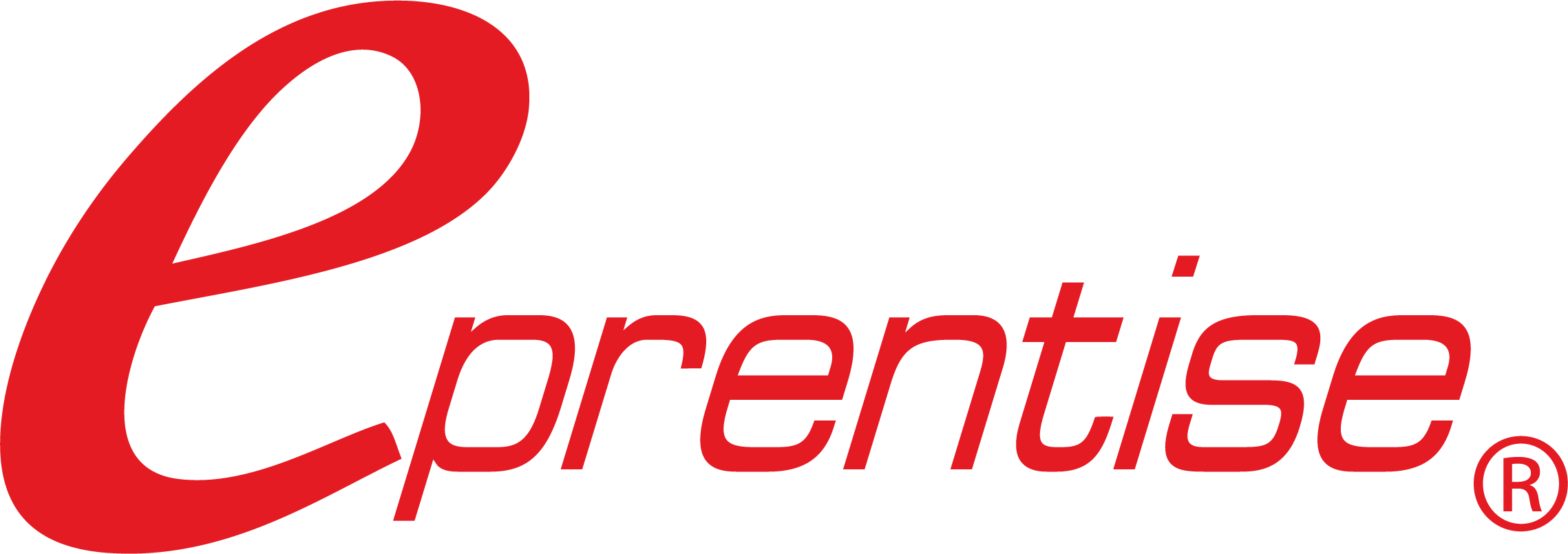It is no surprise that IT is not always aligned with business goals. The conflicts arise because IT is often unaware of how the business uses the systems that IT is responsible for installing and supporting, and the business is often unaware of exactly what is involved in an IT project. There are several other reasons for the disconnect between IT and the business.
The Fundamental Disconnects
The first of these conflicts occurs because of the way IT projects are often initiated and funded. The business determines that they need a system to perform a certain function and decides how much they are willing to spend on the system. IT, with a desire to bring a project in under budget, often selects an enterprise system that meets most of the needs (and is a new technology that they want to learn) without thoroughly identifying the business requirements and performing a gap analysis between the selected system and the identified requirements. As a result, the selected system needs extensive modification to meet the business needs, or else the business user develops work arounds in the form of spreadsheets or many smaller stand-alone systems that need to be integrated with the enterprise system. The calculated costs of maintenance and support are often restricted to that required by the enterprise system without consideration for the additional costs of spreadsheets or the stand-alone systems. Also, the budget may include the initial costs of the license and implementing the system but may not consider the total cost of ownership over a period of time.
A second area of conflict is often the result of the business designing new processes in the abstract without regard to the standard functionality of the system. I have been on many projects where the business spends a lot of money designing the best-in-class order to cash or procure to pay business process and then expects IT to just make it work in an existing system. Without knowledge of the existing system, the business designs a process that requires many customizations or enhancements that cost IT money to develop and maintain. Then the business says that IT took too long or was over budget, and maybe they still didn’t get what they expected.
In a similar scenario, the business doesn’t understand the features of the new system. The design of the accounting chart of accounts is a good example. The business tries to replicate a legacy system in their new ERP system without being familiar with the functionality of the subledgers. As a result, everything goes into the chart of accounts (projects, customers, employees, etc.), and then they demand that IT write custom reports to track and reconcile the detailed transactions. The cost of the custom reports was not included in the cost of the ERP system. Alternatively, because the business can’t get the reports they want out of the ERP system because it was not properly designed or the data is not complete or consistent, IT begins a large data warehouse or business intelligence project to try to accommodate the requirements. The business only sees the additional costs and huge projects and still doesn’t have the information that it needs. Who’s to blame? Why, IT of course.
A third disconnect results when the business does not delineate the benefits of an approach to IT and only specifies the end result. For example, the business might say that they want to consolidate all of the instances of their ERP system. IT thinks that means consolidating the various databases onto a single server. They do that, but the business is still not able to report across instances or have consistent information and standards for the enterprise. What the business really wanted was a single consolidated instance with data differences reconciled and suppliers, employees, and customers rationalized. The company might save infrastructure costs by consolidating to a single server, but the business did not get the benefits of standard processes and consistent data.
Desire for Chaos
This next area is very controversial and one that few in IT will admit. The Maslow principle states that people must provide for basic needs and feel secure before they can be productive. Many of the IT initiatives that help cut costs in fact do so by eliminating positions. Let’s take the example above with consolidating databases. If there are multiple instances of a database, then multiple IT people are needed to support and maintain those databases. If 10 instances of a production database are running (one for each regional area or line of business), then development, test, training, recovery, and production databases must be supported and maintained for each instance, or a minimum of 50 database environments. If a DBA (database administrator) is responsible for 10 databases and the company needs 24 x 7 coverage (168 hours/week), then it would require a team of approximately 21 people to maintain 50 instances (168 divided by 40 work hours per week = 4.2 people for around-the-clock coverage, times 5 teams to cover 50 databases). If the company consolidates into a single production database, then only 4.2 people are needed for coverage, and the other 17 people are likely out of a job. Each person needs to feel secure in their position, and thus, doesn’t fully support the concept of a single consolidated database.
In another example of job security, many systems are customized without full documentation. There is only one person in the organization who understands how the code works and can enhance and support it. That is job security. The notion of job security also applies to the business side of the house. Again, few spreadsheets or business processes are fully documented, and only one person understands how to reconcile the company’s receivables to their general ledger.
Finally, because the data is not transparent across the enterprise or there are no clear data governance and stewardship responsibilities defined, only a few people understand how to generate the reports or analyze the data that the company needs to operate. The resulting chaos is job security.
Fastest Time to Value
When new IT projects and initiatives are brought to the table, care should be taken when assigning project sponsors and leadership positions. Just because IT has received buy-in from the business for a project doesn’t guarantee that a successful project in the eyes of the IT organization will be a success for the business. If the project leader is focused on achieving the fastest time to value, the value piece must relate to value for the business – not value for the IT organization, as is sometimes the case.
Conclusion
Removing the disconnects and diluting the disparities between the business and IT is possible, but it can’t happen by itself. One option is to create job descriptions or modify existing descriptions for IT positions that introduce an aspect of accountability to the business. These key employees can act as mediators between the business and IT, making sure the requirements of both parties are met when carrying out new initiatives. A person is likely to put time and effort into fulfilling his or her role if they are held accountable for it. IT must not cut corners just to bring a project in under budget. The business cannot design a best-in-class system without giving IT the budget to bring it to life. The mediators make sure both parties are on the same page and communicate perceptions and expectations for budget, project approach, and end results to both IT and the business. Everyone is in the loop, and everyone’s expectations are more likely to be met. Furthermore, the resulting systems are better able to fulfill the business’ needs, so the reliance on spreadsheets, smaller systems, and other nuisances that create the original disconnects fades away. It becomes a win-win situation for both the business and IT.







129 thoughts on “The Business vs. IT: Can’t We All Just Get Along?”
dZmNyVZGVkD
iAfDwssTM00
viSCMWsU9JP
rHXo8lG1XrU
yXCfNxdvO4I
PxoloM0Wbs3
foRGIK86n2g
OsKEZzYR8YW
wsMveEgpJPl
H425dcPKdeL
Crkj5Zh6B4V
yySHl40hEpL
FOUlDzJFvTn
IiCgrLbEVOi
mYyBsgv62K6
zp1UFd2bEXU
2tl6skMpgZU
vyXT3PzfN6u
P64TnfkGsFa
y3qGp5J2ovJ
rHffBYIudZi
gVUpFkP2dkG
ZCFTsXqTu7L
G2NNcKsnq1Q
RKMumEDPXim
VhJWX4Y5dFg
kk34vuMvURi
L4Ybo6sOceO
QnTzpPJnYCE
CUUGJuaw0Xw
mhoU3eQARRs
QCDrYQCnnAy
tBeRflqQ2zS
uINvNYZdaG4
LEQP1bwFX6z
# Harvard University: A Legacy of Excellence and Innovation
## A Brief History of Harvard University
Founded in 1636, **Harvard University** is the oldest and one of
the most prestigious higher education institutions in the United States.
Located in Cambridge, Massachusetts, Harvard has built a global
reputation for academic excellence, groundbreaking research, and influential alumni.
From its humble beginnings as a small college established to educate clergy, it has evolved into
a world-leading university that shapes the future across various disciplines.
## Harvard’s Impact on Education and Research
Harvard is synonymous with **innovation and intellectual leadership**.
The university boasts:
– **12 degree-granting schools**, including the
renowned **Harvard Business School**, **Harvard Law School**, and **Harvard Medical School**.
– **A faculty of world-class scholars**, many of whom are Nobel
laureates, Pulitzer Prize winners, and pioneers in their fields.
– **Cutting-edge research**, with Harvard leading initiatives in artificial intelligence, public health,
climate change, and more.
Harvard’s contribution to research is immense, with billions of dollars allocated to scientific discoveries and technological advancements each year.
## Notable Alumni: The Leaders of Today and Tomorrow
Harvard has produced some of the **most influential figures** in history,
spanning politics, business, entertainment, and science.
Among them are:
– **Barack Obama & John F. Kennedy** – Former U.S. Presidents
– **Mark Zuckerberg & Bill Gates** – Tech visionaries (though Gates did not
graduate)
– **Natalie Portman & Matt Damon** – Hollywood icons
– **Malala Yousafzai** – Nobel Prize-winning activist
The university continues to cultivate future leaders who shape industries and drive global
progress.
## Harvard’s Stunning Campus and Iconic Library
Harvard’s campus is a blend of **historical
charm and modern innovation**. With over **200 buildings**, it features:
– The **Harvard Yard**, home to the iconic **John Harvard Statue**
(and the famous “three lies” legend).
– The **Widener Library**, one of the largest university
libraries in the world, housing **over 20 million volumes**.
– State-of-the-art research centers, museums, and performing arts venues.
## Harvard Traditions and Student Life
Harvard offers a **rich student experience**, blending academics with vibrant traditions, including:
– **Housing system:** Students live in one of 12 residential houses, fostering a strong sense of community.
– **Annual Primal Scream:** A unique tradition where students de-stress by running
through Harvard Yard before finals!
– **The Harvard-Yale Game:** A historic football rivalry that unites alumni and students.
With over **450 student organizations**, Harvard students engage in a diverse range of extracurricular activities, from entrepreneurship to performing arts.
## Harvard’s Global Influence
Beyond academics, Harvard drives change in **global policy,
economics, and technology**. The university’s research impacts healthcare, sustainability, and artificial intelligence, with partnerships across industries worldwide.
**Harvard’s endowment**, the largest of any university, allows it to fund scholarships, research,
and public initiatives, ensuring a legacy of impact
for generations.
## Conclusion
Harvard University is more than just a school—it’s
a **symbol of excellence, innovation, and leadership**.
Its **centuries-old traditions, groundbreaking
discoveries, and transformative education** make it one of the most influential institutions
in the world. Whether through its distinguished alumni, pioneering research, or vibrant student life, Harvard continues to shape the future in profound
ways.
Would you like to join the ranks of Harvard’s legendary
scholars? The journey starts with a dream—and an application!
https://www.harvard.edu/
https://vc.ru/
Elon Casino is hands down the most exciting online gaming spot I’ve tried!
https://mediawiki.uedemersv.de/index.php?title=Benutzer:Geraldine27D
The colors at Elon Casino pop off the screen!
https://ai-db.science/wiki/User:Chance3846
Elon Casino’s spins are quick and thrilling.
https://cryptocurrence.wiki/index.php?title=Orbis_57l
The bonuses at Elon Casino are always a thrill!
https://ai-db.science/wiki/User:KaylaZimmerman
I landed a huge win at Elon Casino – still buzzing!
https://wiki.acrotricks.com/wiki/Orbis_29q
JBL speakers bring every song up!
https://libchrist.wiki/index.php/JBL_99Z
My JBL speaker’s bass hits deep without overpowering.
https://www.sotballbet.com/forums/topic/jbl-66g/
JBL speakers make every playlist sound epic!
https://cannabis-cultivation.wiki/index.php?title=Benutzer:Julius3118
либет казино, ауф казино, болливуд казино
изи кэш казино
болливуд казино
1xbet promo code 1xBet Promo Code: VES2025NA is a special combination of characters that allows you to receive a welcome bonus of up to $1025 with a 500% match on your first deposit
Бытовая техника NEFF: инновации, стиль и немецкое качество
Немецкий бренд NEFF, основанный в 1877 году, уже почти
полтора века остается синонимом качества, инноваций и изысканного дизайна в мире бытовой техники.
Специализируясь на встраиваемых решениях премиум-класса,
NEFF предлагает широкий ассортимент приборов, которые превращают рутинные домашние дела
в удовольствие, а кухню — в пространство для
творчества. В этой статье мы расскажем, чем выделяется техника NEFF, какие
категории приборов она включает и почему
бренд завоевал доверие миллионов
пользователей по всему миру.
История и философия бренда
NEFF был основан Карлом Андреасом Неффом в городе
Бреттен, Германия. Начав с производства угольных печей, компания
быстро перешла к созданию передовых решений
для дома. Сегодня NEFF входит в состав концерна
BSH Hausgeräte GmbH, но сохраняет свою уникальную
идентичность, ориентированную на кулинарное творчество и функциональность.
Философия бренда строится вокруг идеи вдохновлять пользователей.
NEFF не просто создает технику — он предлагает
инструменты для реализации идей,
будь то приготовление сложного ужина или уход за домом.
Слоган бренда — «Готовьте с удовольствием» — отражает стремление сделать процесс работы с техникой интуитивно понятным и
увлекательным.
Ассортимент бытовой техники
NEFF
NEFF специализируется на встраиваемой технике, которая гармонично интегрируется в любой интерьер.
Ассортимент бренда включает несколько ключевых категорий, каждая из
которых отличается инновационными технологиями и продуманным
дизайном.
1. Духовые шкафы
Духовые шкафы NEFF — это сердце ассортимента бренда.
Они оснащены уникальными
функциями, такими как:
CircoTherm®: система равномерного распределения горячего
воздуха, позволяющая готовить несколько блюд одновременно без смешивания запахов.
Slide&Hide®: полностью убирающаяся дверца,
которая экономит пространство и упрощает доступ к блюдам.
VarioSteam®: функция добавления пара для сохранения сочности и текстуры блюд.
Модели 2023–2025 годов предлагают интеллектуальное управление через приложение Home Connect,
которое позволяет контролировать процесс приготовления удаленно и получать рекомендации по рецептам.
2. Варочные панели
Варочные панели NEFF представлены газовыми,
электрическими и индукционными моделями.
Индукционные панели с технологией FlexInduction позволяют гибко
использовать зоны нагрева, адаптируя
их под посуду любого размера.
Управление осуществляется через интуитивно понятную кнопку TwistPad®
Fire, которая заменяет традиционные переключатели и обеспечивает точную
настройку.
3. Посудомоечные машины
Посудомоечные машины NEFF сочетают экономичность и высокую эффективность.
Технология DoorOpen Assist позволяет открывать дверцу легким нажатием, что особенно удобно для кухонь без
ручек. Функция Time Light проецирует время
до конца цикла на пол, а модели с загрузкой до 14 комплектов посуды идеально подходят для больших семей.
4. Холодильники и морозильники
Холодильники NEFF отличаются продуманной
эргономикой и функциями сохранения свежести продуктов.
Зона FreshSafe поддерживает оптимальную температуру и влажность, а технологии суперохлаждения и суперзаморозки обеспечивают длительное хранение без потери
качества.
5. Вытяжки
Вытяжки NEFF — это сочетание мощности и эстетики.
Модели шириной до 90 см подходят для больших варочных
панелей, а варианты с выдвижным экраном идеально
вписываются в компактные кухни.
Технология CleanAir эффективно устраняет запахи, обеспечивая комфорт в помещении.
6. Микроволновые печи и пароварки
Микроволновые печи NEFF объемом 20–25 литров оснащены грилем и автоматическими программами, что делает их универсальными помощниками.
Пароварки поддерживают
приготовление в стиле Sous-Vide, сохраняя вкус и пользу продуктов.
7. Стиральные машины
Стиральные машины NEFF выделяются уникальной функцией Time Light,
которая проецирует информацию о стирке на пол.
Инверторные двигатели гарантируют тихую
работу и долговечность, а программы для деликатных тканей обеспечивают
бережный уход.
8. Кофемашины и аксессуары
Встраиваемые кофемашины NEFF позволяют наслаждаться профессиональным кофе дома.
Они поддерживают приготовление эспрессо, капучино и других напитков с настройкой крепости и объема.
Аксессуары, такие как фильтры для воды
и средства для ухода, продлевают срок службы
техники.
Инновации и технологии
NEFF постоянно внедряет новые решения, чтобы упростить жизнь пользователей:
Home Connect: приложение для удаленного
управления техникой, синхронизации рецептов и диагностики состояния приборов.
Pyrolytic Cleaning: система пиролитической самоочистки для духовых шкафов, которая превращает загрязнения в пепел.
EfficientSilentDrive: тихие и энергоэффективные моторы в вытяжках и посудомоечных машинах.
Эти технологии не только повышают
удобство, но и способствуют экономии ресурсов, что делает технику NEFF экологически ответственной.
Дизайн и интеграция
Встраиваемая техника NEFF разработана так,
чтобы стать частью кухонного гарнитура.
Использование нержавеющей
стали, стекла и стеклокерамики
придает приборам элегантный вид,
который подходит для стилей от минимализма до
хай-тека. Устройства гармонично сочетаются друг с другом, позволяя создавать комплекты из варочной панели, духового шкафа, вытяжки
и других приборов.
Преимущества техники NEFF
Немецкое качество: производство на
заводе в Бреттене гарантирует надежность и долговечность.
Инновации: NEFF задает стандарты
в отрасли, внедряя функции, которые позже становятся трендами.
Удобство: интуитивное управление и продуманная эргономика делают технику доступной для всех.
Эстетика: стильный дизайн превращает приборы в
украшение кухни.
Гарантия и сервис: официальные дилеры предлагают гарантию до 12 месяцев и доступ к оригинальным комплектующим до
10 лет.
Почему выбирают NEFF?
NEFF выбирают те, кто ценит комфорт, функциональность и возможность
экспериментировать. Бренд идеально подходит
для кулинаров, которые хотят раскрыть свой
потенциал, и для тех, кто ищет надежные
решения для дома. Отзывы пользователей подчеркивают долговечность техники и
ее способность упрощать повседневные задачи.
http://wiki.myamens.com/index.php/NEFF_98F
Только 2 знакам Зодиака невероятно повезет во второй половине апреля
https://x.com/Fariz418740/status/1911625378860278161
Beer Basha: пиво, вкус и отдых на Каспии в Sea Brezze
https://sealife.az/sea-breeze/restaurants_and_bars/beer-basha-pivo-vkus-i-otdyh-na-kaspii-v-sea-brezze/
Скретч-карты и предки: как лотереи захватили молодежь Китая
https://x.com/kiselev_igr/status/1911668859800560076
Kamagra vs Viagra Australia helped me out, but I’m sticking to prescribed meds now.
Kamagra vs Viagra Australia worked as promised, but
my blood pressure felt off.
How to Use Kamagra Oral Jelly worked fast,
but my nose got stuffy afterward.
Оболочки резинокордные —
это долговечность материала
https://flynonrev.com/airlines/index.php/Pnevmo_91z
Пробки для трубопроводов
— это экономия времени
https://www.ventura.wiki/index.php/Pnevmo_72K
Заглушки с байпассом — это
контроль системы
https://aexcom.org.pe/index.php/Pnevmo_72p
Пневмозаглушка надежно перекрывает трубы во время ремонта, экономя время
и силы
https://trade-britanica.trade/wiki/Pnevmo_51h
“Dolu”da h?rbcil?r dedil?r ki… | Elxan C?f?rov kinolar?m?z?n ugursuzlugundan dan?sd? – QAPQARA
https://www.youtube.com/watch?v=pAeu_YZs-7I
“Ucan taksi” surucusu tovb? etdi | Baku TV-y? hadis? an?n? dan?sd? – ARZUNUN VAXTI
https://www.youtube.com/watch?v=d1VeGY0sw9Q
“Японская Ванга” предсказала крупную катастрофу через три месяца
https://x.com/Fariz418740/status/1912152170230603979
Раскрыты шокирующие подробности гибели самой желанной женщины XX века
https://x.com/kiselev_igr/status/1912395338134020172
Раскрыто неожиданное воздействие жары на организм
https://x.com/kiselev_igr/status/1912450547405250622
Последствия сильного ливня: эвакуированы 31 человек, включая 10 детей
https://x.com/kiselev_igr/status/1912488013038248258
elonbet
Названы 2 знака зодиака, которые притягивают деньги для всех
https://x.com/kiselev_igr/status/1912761312003637382
Самые сексуально совместимые знаки зодиака
https://x.com/SvetlnaKr2/status/1912772846427701425
19-летний тиктокер обручился с 76-летней миллиардершей: «Это была любовь с первого взгляда»
https://x.com/SvetlnaKr2/status/1912781403533570376
Какие знаки зодиака чаще попадают в аварии: данные страховых компаний
https://x.com/kiselev_igr/status/1912791299700256974
5 утренних привычек богатых людей, о которых молчат интервью
https://x.com/IrinaPavlovna84/status/1912948849158840804
Что едят богатые на завтрак: от авокадо до шампанского
https://x.com/IrinaPavlovna84/status/1912974156561346968
Террасная мебель для стильного
дизайна вашего outdoors
Террасная мебель для гармоничного дизайна
Создание гармоничной атмосферы на открытом пространстве
требует внимательного выбора
предметов интерьера. Для этого стоит
обратить внимание на высококачественные изделия, которые не только радуют глаз, но и обладают практичностью.
Курируя пространства вокруг дома, важно учесть не только эстетические аспекты, но
и функциональность различных предметов.
При выборе конструкций для отдыха необходимо ориентироваться на устойчивость к погодным условиям.
Алюминий и искусственный ротанг становятся фаворитами, благодаря своей долговечности и легкости в уходе.
Текстиль также играет значимую роль:
водоотталкивающие и ультрафиолетовые ткани обеспечат комфорт и безопасность.
Особое внимание уделите освещению.
Лампы и светильники создадут нужное настроение
и сделают отдых более уютным
и приятным. Не забывайте о зеленых
насаждениях, которые оживят пространство и добавят свежести.
Таким образом, правильно подобранные элементы сделают
вашу зону отдыха не только привлекательной, но и комфортной для проведения времени с близкими и друзьями.
Как выбрать мебель для создания уютной зоны
отдыха
При выборе предметов для отдыха на свежем воздухе важно учитывать несколько ключевых аспектов.
Начните с определения назначения пространства.
Если вы планируете использовать его для спокойных вечеров с книгой или дружеских встреч, акцентируйте внимание на комфортных вариантах.
Материалы играют решающую роль в долговечности
и простоте ухода. Рекомендуется
выбирать изделия из водоотталкивающих и
устойчивых к воздействию ультрафиолета материалов,
таких как алюминий, искусственный ротанг или обработанное дерево.
Они не только сохранят свой вид, но и потребуют
минимальных усилий для ухода.
Не забывайте о стиле и цветовой палитре.
Постарайтесь выбрать оттенки, которые гармонируют с окружающим
пейзажем. Нейтральные или естественные цвета хорошо сочетаются с
зеленью и создают спокойную атмосферу для отдыха.
Размеры предметов также играют важную роль.
Убедитесь, что пространство не переполнено – оставьте
достаточно места для свободного передвижения.
Измерьте площадь, прежде чем делать покупку, чтобы избежать разочарования.
Комфорт сидений должен быть
одним из ведущих факторов при выборе.
Наиболее приятны модели с мягкими подушками.
Убедитесь, что они имеют съемные чехлы, чтобы при необходимости их можно было легко стирать.
Кроме того, продумайте дополнительные элементы, такие как столики, которые будут удобны для отдыха.
Настенные светильники или фонари добавят
уюта в вечернее время и создадут атмосферу для расслабления.
Однако не забывайте о практичности.
Компактные варианты или изделия с возможностью складывания особенно полезны
в небольших пространствах. Такой подход позволит сделать зону
функциональной и уютной одновременно.
Визуально соединяйте разные варианты, чтобы подчеркнуть общую концепцию.
Добавление зелени, текстиля или аксессуаров
сделает вашу зону отдыха более
индивидуальной. В конечном итоге,
если каждый элемент выбран
с вниманием, результат превзойдет все ожидания.
Тренды в дизайне террасной мебели: материалы и стили 2023 года
2023 год принес свежие идеи в выбор материалов и стилевых решений для оформления уличного пространства.
Одним из главных направлений стали экологически чистые разработки.
Изделия из переработанных и устойчивых к внешним воздействиям материалов, таких как бамбук и лавровое дерево,
набирают популярность. Эти ресурсы не
только долговечны, но и придают атмосфере живость и натуральность.
С точки зрения цветовых решений, актуальными
остаются нейтральные оттенки, такие как серый, бежевый и белый.
Однако контрастные акценты
в ярких тонах – изумрудный, терракотовый и глубокий синий – становятся удобным способом выделить отдельные
элементы на фоне спокойных тонов.
Это поможет создать динамику и привлечь
внимание к деталям.
Форма и ритм также испытывают трансформацию.
Овальные и круговые конструкции заменяют традиционные прямые линии.
Мягкие, органичные формы преобладают,
создавая ощущение комфорта и уюта,
что особенно актуально для зон отдыха.
Металлические каркасы, выполненные из алюминия или нержавеющей стали, обеспечивают не только прочность, но
и современный внешний вид.
Такие конструкции могут сочетаться с мягкими сиденьями из
текстильных или искусственных тканей, устойчивых к влаге и выгоранию.
Это позволяет поддерживать
стильный вид на протяжении всего сезона.
Модульные системы также находят своё место в современных интерьерах.
Возможность изменять конфигурацию позволяет максимально адаптировать пространство
под изменяющиеся потребности.
Такой подход стимулирует творческий подход к организации отдыха на
свежем воздухе.
Не обходится и без акцента на функциональность.
Встраиваемые системы хранения и практичные решения, такие как легко складываемая мебель,
становятся стандартом при обустройстве пространства.
Это позволяет создать порядок и удобство, что особенно важно
в ограниченных по площади участках.
Таким образом, сочетание экологичности, оригинальности форм, ярких акцентов и
функциональности становится основным трендом в оформлении уличных уголков в этом сезоне.
Новые решения помогут создать комфортное
и привлекательное пространство для отдыха.
садовая мебель из ротанга
Комфортная мебель для террасы на открытом воздухе
Мебель для террасы – комфорт на открытом воздухе
Создание пространства для релаксации на улице требует внимания к деталям
и способности сочетать эстетические
предпочтения с практическими аспектами.
Выбор подходящих предметов интерьера позволяет обеспечить гармонию с природой и комфорт для
всех, кто наслаждается временем на
свежем воздухе. Прежде всего,
стоит обратить внимание на материалы,
из которых изготовлены конструкции.
Выбор влагостойких и устойчивых к
ультрафиолетовому излучению вариантов поможет избежать
частой замены и сохранит привлекательный внешний вид.
Не забудьте о функциональности.
Правильный выбор включает в себя изделия с возможностью трансформации, как раскладывающиеся кресла или столы, легко приспосабливаемые под разные случаи.
Рассмотрите возможность дополнения
вашего пространства уютными элементами, такими как подушки и пледы, которые добавят
уюта и позволят насладиться отдыхом даже в прохладные
вечера.
При планировании обустройства не стоит
забывать о количестве мест.
Учитывайте, сколько людей, как правило, собирается на вашем участке.
Адаптируйте расстановку предметов так,
чтобы обеспечить достаточное расстояние между ними для комфортного общения и передвижения.
Добавление стеклянных или графических
элементов поможет визуально расширить границы вашего
уголка отдыха, создавая иллюзию открытости
и простора.
Как выбрать устойчивую к погодным условиям мебель
Не менее значимой является текстура
поверхности. Прочные ткани, такие как акрил или полиэстер, устойчивы к ультрафиолетовому излучению и быстро сохнут.
При этом многие современные производители
предлагают водоотталкивающие покрытия, что значительно увеличивает срок службы обивки.
Обратите внимание на вес объектов.
Легкие изделия могут легко перемещаться и переворачиваться
во время сильного ветра.
Лучше отдавать предпочтение более массивным или сбалансированным вариантам, которые обеспечивают стабильность.
Форма предметов также играет роль.
Минималистичный и лаконичный дизайн позволяет избежать накопления уличной грязи и обеспечивает лёгкость в уходе.
Избегайте сложных конструкций с множеством углов и деталей,
так как они сложнее чистятся.
Перед покупкой желательно проверить гарантийные обязательства изготовителя.
Хорошие компании предлагают длительные
гарантии на свою продукцию, что свидетельствует о высоком качестве и прочности.
Наконец, не забудьте учитывать климатические
условия вашего региона. Если вы живете в дождливом или морозном климате,
выбирайте конструкции, специально разработанные для таких условий.
Закрытые хранилища или защитные чехлы также помогут
продлить срок службы объектов, защищая их от неблагоприятных факторов.
Топ-материалы для удобных наружных диванов и
кресел
При выборе диванов и кресел для отдыха
под открытым небом важно учитывать
материалы, которые обеспечат долговечность
и удобство. Рассмотрим наиболее подходящие
из них.
Текстиль, обработанный водоотталкивающими средствами.
Обивка из синтетических волокон, таких как акрил
или полиэстер, обладает высокой устойчивостью к влаге и ультрафиолетовому излучению.
Эти ткани легко очищаются и быстро сохнут, что делает их идеальными для использования в условиях переменчивой погоды.
Металл. Алюминий с порошковым покрытием противостоит коррозии и прекрасно удерживает форму.
Такой материал не требует особого ухода и может долго сохранять привлекательный вид.
Для повышения комфорта рекомендуется использовать подушки с водоотталкивающей обивкой.
Дерево с защитным покрытием.
Твердые породы, такие как тик или балау, являются
отличным выбором благодаря своей прочности
и устойчивости к влаге. Обработка
маслами и лаками защищает древесину от внешних воздействий и сохраняет естественную текстуру.
Регулярный уход продлевает срок службы.
Плетение из пластиковых волокон.
Искусственный ротанг или полипропилен создают стильный внешний вид и высокую стойкость к изменениям погоды.
Эти материалы легкие и прочные, что упрощает транспортировку и ежедневное использование.
Чистка не займет много времени, достаточно протереть поверхность влажной тряпкой.
Приобретая диваны и кресла, стоит
взвесить плюсы и минусы различных материалов.
Выбор зависит от личных предпочтений, стиля и условий эксплуатации.
Уделив внимание деталям, можно создать уютное пространство для отдыха на свежем воздухе.
купить шезлонги для бассейна
2 знака зодиака, которые поглощают всю темную энергию
https://x.com/kiselev_igr/status/1913193565213126938
Названы витамины, дефицит которых провоцирует депрессию и панические атаки
https://x.com/SvetlnaKr2/status/1913210679382724901
Неожиданное открытие: растворимый кофе может быть так же полезен, как и натуральный
https://x.com/SvetlnaKr2/status/1913245545206022281
Сервисный центр Мобиопт – Ремонт телефонов Киров
Кто ставил колпаки с солнечной
подсветкой? Как работает?
https://www.wikiliad.it/index.php?title=Kolpak_68s
Сервисный центр Мобиопт – Ремонт телефонов Киров
Майкл Дуглас и Кэтрин Зета-Джонс разводятся после 25 лет брака
https://x.com/Fariz418740/status/1913473214602166643
Как набрать вес без жира — советы диетолог
https://x.com/DeyanetKrmv/status/1913487846129758689
7 продуктов, которые могут заменить зубную щётку — советует стоматолог
https://x.com/NargisEhme94100/status/1913495035728822630
Сервисный центр Мобиопт – Ремонт телефонов в Кирове
https://x.com/DeyanetKrmv/status/1913622990169706528
fake Louis Vuitton bag
Превосходит защитное стекло на телефон – Гидрогелевая пленка в Кирове
fake Gucci bag
fake Louis Vuitton bag
Gucci replica designer bags
fake Gucci bag
fake Fendi bag
Sea Breeze: Аквапарк и отдых у моря
https://x.com/Fariz418740/status/1913838453889835329
Fendi replica designer bags
Fendi replica designer bags
fake DIOR bag
Косметолог в Санкт-Петербурге – Перманентный макияж
fake Fendi bag
Ученые раскрыли тайны древних вулканов Марса
https://x.com/DeyanetKrmv/status/1914001138669539521
Почему распалась легендарная пара: В чём настоящая причина развода Майкла Дугласа и Кэтрин Зета-Джонс?
?? Майкл Дуглас и Кэтрин Зета-Джонс разводятся после 25 лет: названа причина https://x.com/NargisEhme94100/status/1914005617326370900
DIOR bag replica
?? Овны разбогатеют, Раки отступят, Рыбы помогут: недельный гороскоп с 21 по 27 апреля
https://x.com/SebiBilalova/status/1914031445724582045
Масла против аппетита: как аромат мяты и цитрусов спасают фигуру без диет
https://x.com/DeyanetKrmv/status/1914035562123587745
DIOR bag replica
Ремонт телефонов – Сервисный центр Мобиопт
DIOR replica designer bags
DIOR bag replica
Chanel fake designer bags
DIOR replica designer bags
Li Auto открыл первый городской шоурум в Азербайджане и стала известна дата открытия основного центра!
https://x.com/SvetlnaKr2/status/1914214791301726269
В России произошло сильное землетрясение, началось извержение вулкана https://x.com/SvetlnaKr2/status/1914222755991454029
Chanel bag replica
Врач указала на простой способ выявить риск ранней смерти за 30 секунд
https://x.com/SvetlnaKr2/status/1914246396313473116
What symptom indicates that you can no longer eat sweets?
https://x.com/SvetlnaKr2/status/1914255410711728435
Растительное масло оказалось связано с одним видом агрессивного рака https://x.com/SvetlnaKr2/status/1914281699267035383
Стала известна возможная причина смерти Папы Франциска https://x.com/SvetlnaKr2/status/1914286810018045990
fake Chanel bag
Ученые выяснили скрытую причину ожирения https://x.com/SvetlnaKr2/status/1914327415247040761
fake Celine bag
fake Chanel bag
Chanel replica designer bags
Why did the legendary couple break up: What is the real reason for Michael Douglas and Catherine Zeta-Jones’ divorce?
https://x.com/Fariz418740/status/1914362994722550123
fake Celine bag
Celine fake designer bags
fake Celine bag
Celine replica designer bags
Why did the legendary couple break up: What is the real reason for Michael Douglas and Catherine Zeta-Jones’ divorce?
https://x.com/Fariz418740/status/1914362994722550123
Celine bag replica